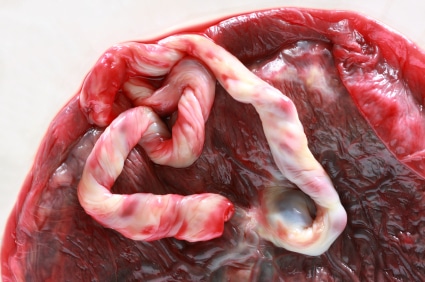A new study shows that a mother’s heart can tackle issues better during pregnancy than at other times. According to a research abstract presented at the American Heart Association’s Scientific Sessions 2011, the placental stem cells have the ability to recognize a heart ailment, go to the mother’s injured tissue and create new healthy cardiac cells.
Researchers began the investigative study when they found out that women with pregnancy-associated cardiomyopathy had a better rate of recovery than people with other causes of this form of heart failure. They wanted to know whether the fetal cells helped repair the mother’s heart.
To find out the research team conducted a test on mice. They induced heart attacks in pregnant mice and checked a week or two later if the fetal cells had helped the mother’s heart recover. The fetal cells were genetically tagged with green fluorescent protein (GFP) to help detect their presence.
The team found that fetal cells were indeed going to the injured tissue areas.
“Much to our surprise, they homed selectively and specifically to just the injured zone of the maternal hearts, not the non-injured zones, and not to non-injured organs within the same mouse,” said Hina Chaudhry, M.D., senior author of the study and a cardiologist at Mount Sinai Medical Center in New York City.
Two weeks later the mother’s heart consisted of 2 percent of the fetal cells. Also, these cells differentiated into heart muscle cells and cells that form blood vessels or the inner lining of blood vessels and other organs.
What was also amazing was that when these fetal cells were isolated from the mother’s heart and grown in Petri dishes in lab conditions, even then they formed beating cardiac cells.
About 40 percent of the fetal cells that were incorporated into the mothers’ hearts expressed a protein called Cdx2, a marker of trophoblast stem cells. These cells are formed when the embryonic cells develop and form all the types of cells in a baby. They also give rise to the placenta.
“Trophoblast stem cells have previously not been thought to contribute to organ development other than placenta formation,” said Chaudhry, suggesting placental stem cells may also help others with heart disease.
“You could bank placentas and isolate stem cells and potentially use them in other individuals and not just for peripartum cardiomyopathy, but for a broad spectrum of heart diseases,” she said.
Unlike the use of embryonic stem cells, the placenta cells do not violate many religious beliefs too suggested the researcher. The team is now conducting experiments to know the type of cells that did not show the presence of the protein Cdx2. They believe that these cells too originated from the placenta but left the protein component when they differentiated into cardiac cells.
“If we can confirm that trophoblast stem cells are directly involved in mediating cardiac repair in the injury state, then we may just have found that elusive cell type, other than the embryonic stem cell, that can truly become a beating heart muscle cell,” Chaudhry said.
The study was funded by The National Institutes of Health.
Related Articles:
- Study: Pregnancy Safe for Women with Stable Lupus
- UK Cesarean Ban Counteracted by National Institute for Clinical Excellence
- Possible Link Found Between Ovarian Cancer and IVF







